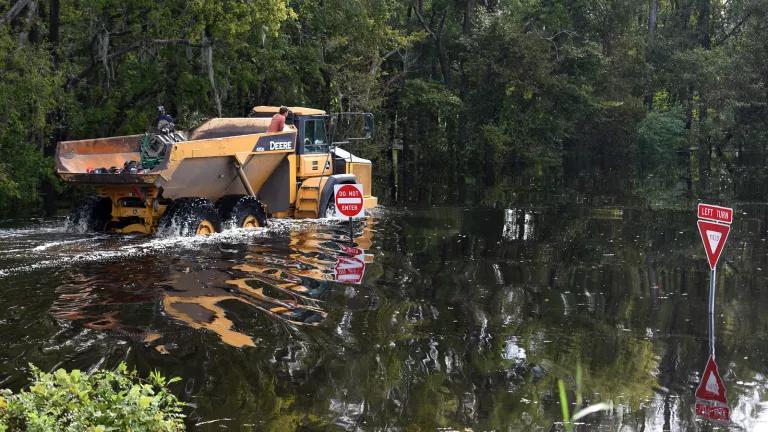
Debris in Red Hook, Brooklyn.
New York and New Jersey are inching toward recovery, but we have a long way to go before we rebound from Hurricane Sandy. Like millions of residents, my family is still without power. NRDC’s New York office remains darkened and many of our staff members have had to leave their homes for warmer, drier locations. All across the region, people are lining up for fuel for generators, buses for work, and food for families. Many senior citizens are stranded in their apartments without heat or critical medicines, and many families are stuck in public-housing high rises in Lower Manhattan without access to safer alternatives.
Experts used to discuss climate change in terms of computer models and scientific forecasts. Now Americans are talking about it in its most urgent terms: people’s lives. When climate change intensifies extreme weather like hurricanes and droughts, our families—and our homes, jobs, neighborhoods, and plans for our children—feel the brunt.
The human toll of climate change is mounting and we must act. America must wake up and curb climate change. Whoever is elected next week has to make this a top priority, and we at NRDC will do everything in our power to make that happen.
Many leaders are already pointing the way forward. New York Governor Andrew Cuomo said on Wednesday, “I think part of learning from [Hurricane Sandy] is the recognition that climate change is a reality. Extreme weather is a reality. It is a reality that we are vulnerable.” On Thursday, New York City Mayor Michael Bloomberg said that Hurricane Sandy and other extreme storms reveal the need for local and national leadership on climate change.
We applaud Governor Cuomo and Mayor Bloomberg. They are talking about climate change because they want to get our region back on its feet and make sure we are prepared for the next extreme weather event. They aren’t working some political angle. This isn’t about Democrats, Independents, or Republicans. It’s about all New Yorkers.
And it’s about all Americans. The Mid Atlantic was hit hard by Hurricane Sandy, but earlier this summer, the National Weather Service’s Drought Monitor said more than half the country was in the grip of the worst drought in 50 years and nearly 1,300 counties had been designated disaster areas. As many as 131 million people were under heat advisories during the hottest July since record keeping began. And thousands of residents in Western states had to evacuate their homes during one of the worst fire seasons in years.
Climate change is making its presence known no matter where we live. And that is why we must tackle this crisis as a nation.
We can start by making sure local communities have the resources and the blueprints they need to prepare for the affects of the changing climate. NRDC recently assessed several cities and states for their preparedness and found that many have starting changing transportation, sewage, and other infrastructure to reflect rising seas, more frequent floods, and prolonged droughts.
But even as we make our communities more resilient, we must also address the problem at its root. We must reduce the carbon pollution that is fueling climate change. We do this by using energy more efficiently, cleaning up our power plants, rejecting dirty fuels like the Keystone XL tar sands pipeline, and increasing our use of renewable energy.
We have already made progress. Nearly 35 percent of all new power plant capacity built in the U.S. in the last four years came from wind. And a new set of energy efficiency standards NRDC helped develop for refrigerators, dishwashers and other products will reduce carbon pollution by 100 million metric tons a year by 2035—approximately equivalent to emissions from 25 coal-fired power plants. Meanwhile, the Obama administration issued fuel economy standards that will cut carbon pollution from new cars in half. It also proposed the first-ever limits on carbon pollution from coal-fired power plants.
This is a good start but we must do more. We must set carbon limits on existing power plants (click here to send a message to the administration in support of carbon limits). We must extend incentives for wind energy and spur investment in clean energy research. And we must promote energy efficiency by passing several pieces of pending legislation that enjoy broad bipartisan support.
These are the kind of concrete steps we can take to protect our communities from further ravages of climate change. No matter who is elected president next week, we must raise our voices and demand our leaders take climate action. We owe it to the people on the frontlines of climate change: all of us.



